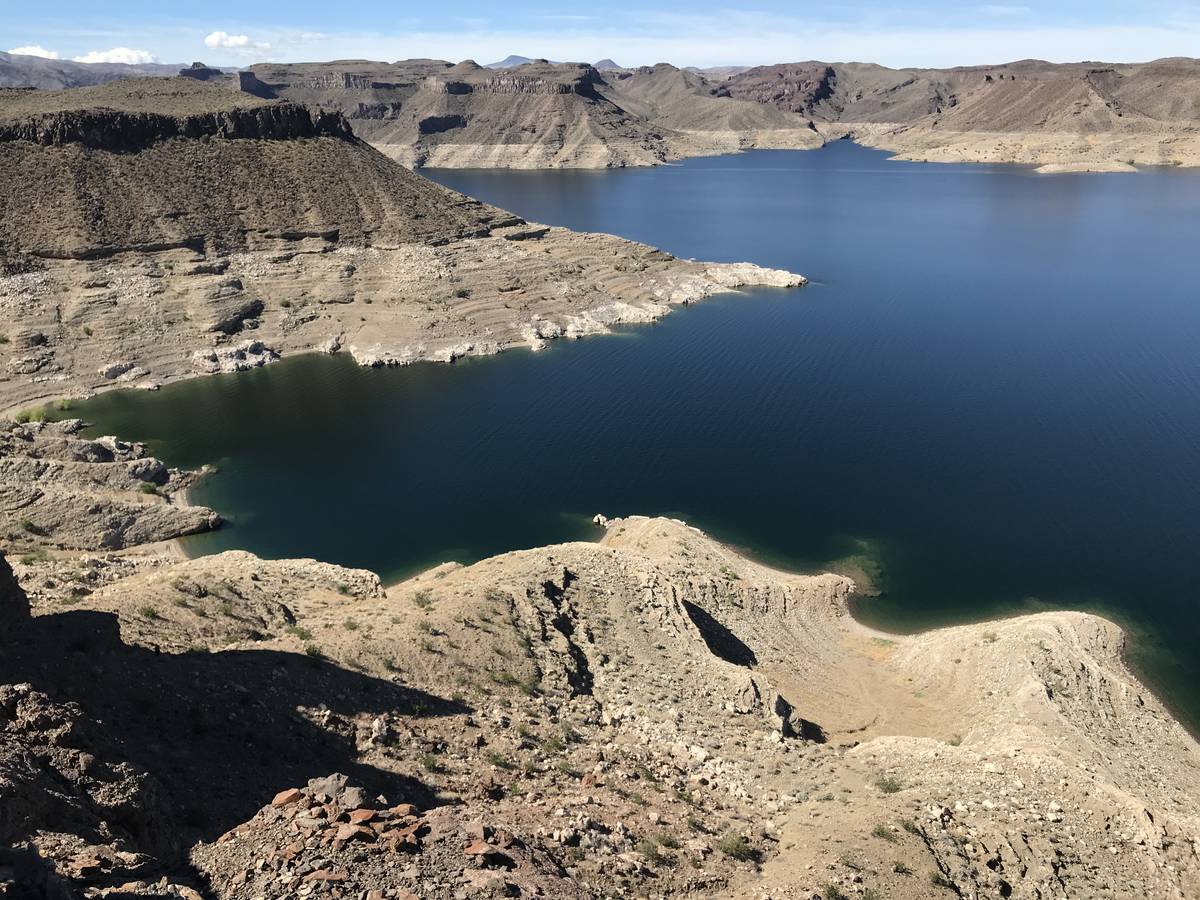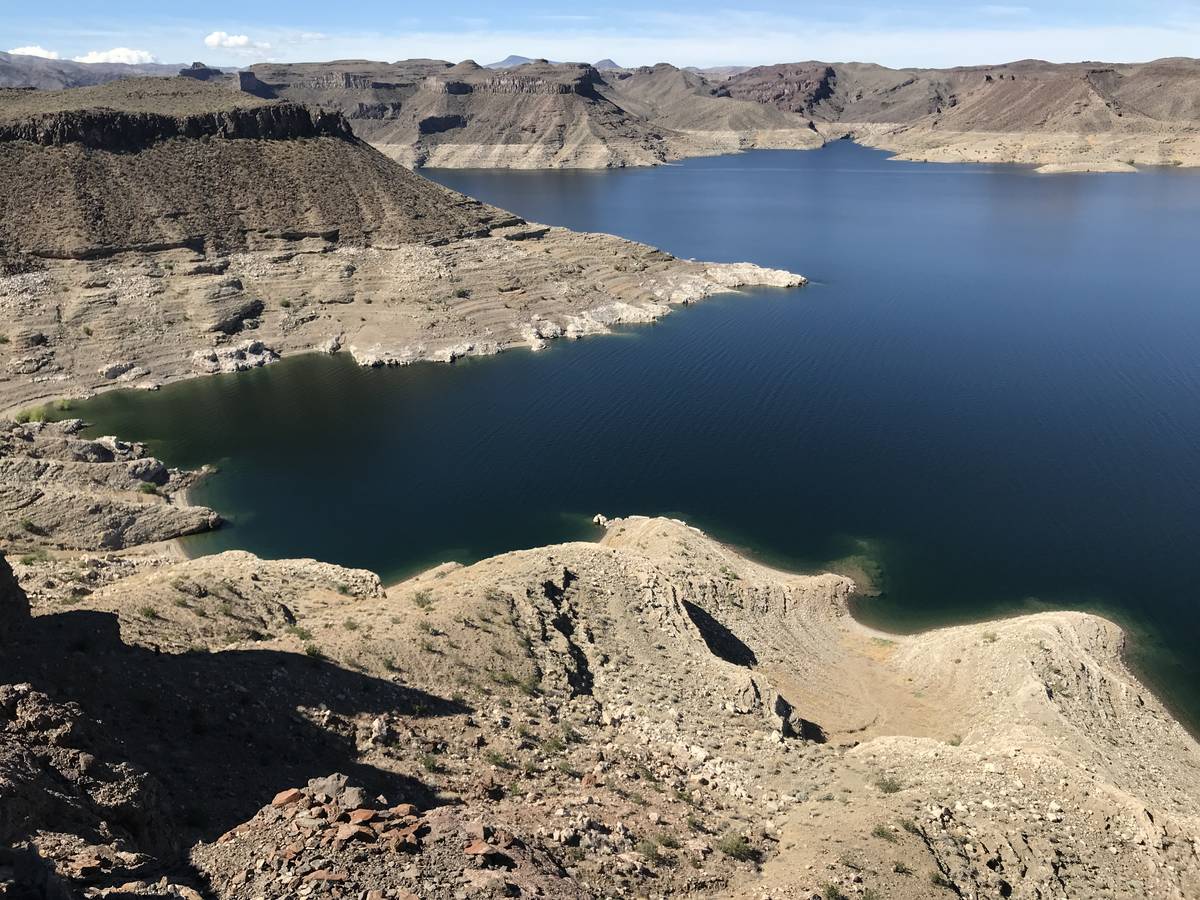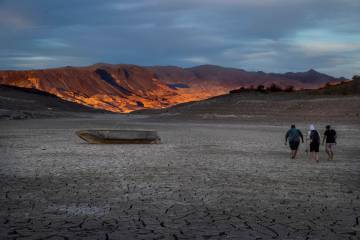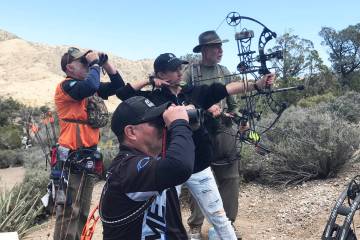Drought conditions at Lake Mead should not be ignored
On its way to the water’s edge, the road to Echo Bay passes through the remnants of a once flourishing marina, now more of a ghost town than the bustling destination for recreational boaters it was in years past.
The pavement ends, but the dirt road it becomes winds its way past the once busy launch ramp that sits more than a mile from its much smaller replacement.
In an ironic twist, the nearby campgrounds are often full of visitors, but those who remember what Echo Bay Marina was like before the drought began about 20 years ago cannot help but feel a little melancholy when passing among its remnants. The desert has a way of wearing the life out of manmade things, especially when their use is limited.
Now, with the drought showing no signs of relenting, the replacement launch ramp at the end of that dirt road is facing its own uncertain future. So too are the other launch ramps and access points at Lake Mead.
According to the National Park Service, which oversees the Lake Mead National Recreation Area, dropping water levels are expected to impact launch ramps at Boulder Harbor, Hemenway Harbor, Temple Bar, Callville Bay, Echo Bay and South Cove as soon as late May.
By the end of March, the water level at Lake Mead was already at 1,098.59 feet, 13.29 feet lower than it was in March 2020, and the Bureau of Reclamation (BOR) expects the elevation to drop to a low of 1,076 feet by the end of May. By November it could be as low as 1,067 feet.
What does this mean for boaters, anglers and others who enjoy water-based recreation? It means that everyone who recreates at Lake Mead should be ready for changes and prepared to exercise a little launch ramp courtesy.
As the water drops, the end of concrete launch ramps could become exposed. With that in mind, the Park Service has “plans to temporarily extend launch ramps in most impacted locations using pipe mats while a long-term solution can be implemented.”
With the number of recreational boaters surging during the pandemic and the annual boating season getting underway, you can expect to experience longer waiting times at ramps with limited capacity. Boaters will need to be informed and flexible. You can find updated launch ramp information online at www.nps.gov/lake/learn/news/lakeconditions.htm .
Currently, in the Boulder Basin where the highest concentration of boating traffic occurs, launch ramps at Boulder Harbor and Callville Bay offer multiple lanes on concrete. Hemenway Harbor is limited to two lanes, also on concrete.
On the water, boaters should be prepared for changes in structure. Rocks that are now underwater could be exposed in a couple of weeks, and those that are now deep could come closer to the surface. Be especially careful in those areas where you are most comfortable. It is there where we tend to let our guard down, something I have experienced firsthand.
For fishermen, dropping water levels could have an impact on fishing, especially during the bass spawn. Places where beds can be found in shallow water today may be high and dry a week from now. The same can be said of other structures. When the habitat changes, the fish change with it. So, you will need to adapt yourself.
Contrary to what some folks might think, there is no filler hose for Lake Mead, no valve to turn on. What we need is snow in the high country and lots of it. Then maybe Echo Bay and other facilities can get back to normal, but it may take a while.
Freelance writer Doug Nielsen is a conservation educator for the Nevada Department of Wildlife. His “In the Outdoors” column is not affiliated with or endorsed by the NDOW. Any opinions he states in his column are his own. Find him on Facebook at @dougwritesoutdoors. He can be reached at intheoutdoorslv@gmail.com























